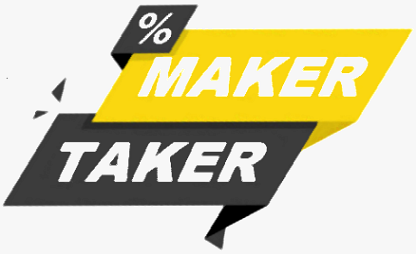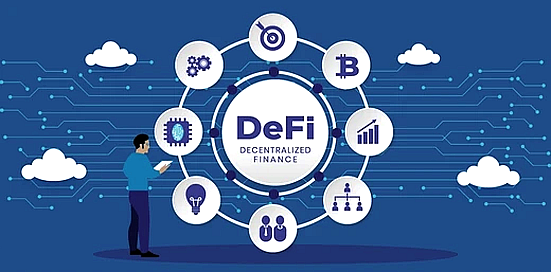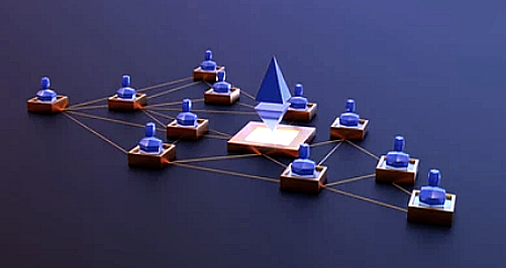Accredited InvestorsAltcoinAnatoli UnitskyAnti-Money Laundering (AML) In CryptoAPIArbitrageArtCoin TokenArticle DirectoryASICAuction Terminology GlossaryBasics of Stock Market InvestingBear MarketBest Crypto Payment Provider In the WorldBitcoinBlockchainBlockchain ConfirmationBlockchain Consensus MechanismBlockchain ForkBlockchain GlossaryBored Ape Yacht ClubBuild a Business That OutperformsBull MarketBuying SkyWay SharesByzantine Fault Tolerance (BFT) ExplainedCasascius CoinCentral Bank Digital Currency (CBDC)Centralized Crypto ExchangeCoinCoinsetCold WalletCollateralCommodity Futures Trading Commission (CFTC)Cross-Chain TechnologyCRUCrypto ExchangeCrypto GlossaryCrypto JokesCrypto Terms to KnowCrypto TickerCryptocurrencyCryptographyCryptojackingCryptounit BlockchainCryptounit GlossaryCryptounit ProgramdApp (Decentralized Application)Dead CoinDecentralized Exchange (DEX)Decentralized Finance (DeFi)Difference Between Bitcoin and EthereumDifferent Ways of Investing MoneyDigital CurrencyDistributed LedgerDo Your Own Research (DYOR)Dollar Cost Averaging (DCA)Dow Jones Industrial Average (DJIA)EncryptionERC-20ERC-721EthereumEvoScentFear Of Missing Out (FOMO)Fear, Uncertainty and Doubt (FUD)Fiat MoneyFNT Fintech CompanyGenesis BlockGlobal Unit PayGlossary of Banking TermsGlossary of Business TermsGlossary of Financial TermsHalvingHODLHot WalletHow Do I Start InvestingHow Rich is Satoshi Nakamoto?How to Create a BlockchainHow to Find Private InvestorsHow to Get Into FintechHow to Program Smart ContractsI Am Thrilled to Be a Part of This Global ProjectInitial Coin Offering (ICO)Initial Public Offering (IPO)Initial Token Offering (ITO)Innovation Basalt TechnologyInnovative Transportation TechnologiesInternational Bank Account Number (IBAN)Investing in Gold Mining StocksInvesting in Gold MiningJagerJoy of Missing Out (JOMO)Know Your Customer (KYC)LedgerLiquidity in CryptocurrencyMaker and Taker Fees in Crypto TradingMarket Capitalization (Market Cap)Meme CoinMetal Credit CardMetaMaskMillenials Now Have Access to Generational WealthMy Best Investment EverNew Digital EvolutionNFT GlossaryOff-Chain TransactionsOn-Chain TransactionsOpen Edition NFTPeer-to-Peer (P2P)Personal Loan GlossaryProbably the Best STO on the MarketProof of Stake (PoS)Real Estate Glossary of TermsReal Estate Investing GlossaryRebase TokenSecurities and Exchange Commission (SEC)Security Token ExchangesSecurity Token Offering (STO)Soulbound Decentralized Identities for Security TokensSoulbound ID Launch by Stobox Proves a SuccessSoulbound TokensStoboxStock Market GlossaryTestimonialsTether Platform and Token (USDT)UnitEx ExchangeUnitsky String TechnologiesUNTBUSDUValidatorWe Started Investing When We Were 25What are Blue Chip NFT?What are Blue Chip Stocks?What are Crypto Assets?What are Crypto Smart Contracts?What are CryptoPunks NFT?What are Digital Assets?What are Digital Collectibles?What are Gas Fees?What are Gas Wars?What are Hashmasks?What are Non Fungible Tokens?What are Non-Sufficient Funds (NSF)?What are Soulbound Tokens (SBT)?What are Stablecoins in Crypto?What are Transactions Per Second (TPS)?What are Utility NFTs?What are Utility Tokens?What Does Burning Crypto Mean?What Does Diamond Hands Mean?What Does Paper Hands Mean?What Does To The Moon Mean?What Does WAGMI Mean?What Happened to Satoshi Nakamoto?What is a 51% Attack?What is a Baby Boomer?What is a Backlink?What is a Banner?What is a Barcode?What is a Bid-Ask Spread in Crypto?What is a Block in Blockchain?What is a Block Reward?What is a Blockchain Address?What is a Blockchain Node?What is a Blockchain Oracle?What is a Blog?What is a Bond?What is a Bot?What is a Broker?What is a Business Accelerator?What is a Cash Cow?What is a Commercial Bank?What is a Commodity?What is a Con?What is a Credit?What is a Credit Limit?What is a Credit Rating?What is a Crypto Airdrop?What is a Crypto Bridge?What is a Crypto Scam?What is a Crypto Token?What is a Crypto Wallet?What is a Crypto Whale?What is a Crypto Winter?What is a Cryptocurrency Public Ledger?What is a Cryptocurrency Roadmap?What is a DAO?What is a Dark Pool?What is a Day Trader?What is a Dead Cat Bounce?What is a Default?What is a Derivative?What is a Digital Credit Card?What is a Fiscal Quarter?What is a Fungible Token?What is a Governance Token?What is a Grace Period?What is a Hard Fork?What is a Hot Wallet?What is a Hybrid Blockchain?What is a Hybrid PoW/PoS?What is a Joint Account?What is a Market Cap?What is a Merkle Tree in Blockchain?What is a Mining Farm?What is a Nonce? What is a PFP NFT?What is a POS System?What is a Prepaid Card?What is a Private Blockchain?What is a Private Key?What is a Public Blockchain?What is a Public Key?What is a Reserve Currency?What is a Ring Signature?What is a Routing Number?What is a Rug Pull in Crypto?What is a Safe Deposit Box?What is a Satoshi?What is a Security Token?What is a Seed Phrase?What is a Shitcoin?What is a Sidechain?What is a Soft Fork?What is a Spot Market?What is a State Bank?What is a SWIFT Code?What is a Tax Identification Number (TIN)?What is a Time Deposit?What is a Transaction Account?What is a Variable Interest Rate?What is a Virtual Assistant (VA)?What is a Virtual Card?What is a Virtual Currency?What is a Visa Card?What is a Whitelist in Crypto?What is a Whitepaper?What is Accounts Payable (AP)?What is AMA in Crypto?What is Amortization?What is an Accrual?What is an ACH Transfer?What is an Actuary?What is an Addendum?What is an Algorithm?What is an Angel Investor?What is an Annuity?What is an Asset?What is an ATM?What is an Atomic Swap?What is an Audit?What is an Avatar?What is an EIN?What is an Embargo?What is an Entrepreneur?What is an IDO (Initial Dex Offering)?What is an Interest Rate?What is an Internet cookie?What is an Investment Bank?What is an NFT Drop?What is an NFT Floor Price?What is an Ommer Block?What is an Orphan Block?What is an Outstanding Check?What is an Overdraft?What is Artificial Intelligence (AI)?What is B2B (Business-to-Business)?What is B2G (Business-to-Government)?What is Bartering?What is Bitcoin Dominance?What is Bitcoin Pizza Day?What is Blockchain Immutability?What is Blockchain Used For?What is BRICS?What is Business-to-Consumer (B2C)?What is C2C (Customer to Customer)?What is Capitalism?What is Catfishing?What is CFD Trading?What is Check Kiting?What is Cloud Mining?What is Communism?What is Content Marketing?What is Decentralization in Blockchain?What is DeFi in Crypto?What is Delisting?What is Depreciation?What is Digital Marketing?What is Diversification?What is Double Spending?What is Dumb Money?What is Dumping?What is Earnings Per Share (EPS)?What is Economics?What is Email Marketing?What is Equity?What is Etherscan?What is Fintech?What is Foreign currency?What is Forex?What is Fundamental Analysis (FA)?What is GameFi?What is Generative Art NFT?What is Gwei?What is Hard Currency?What is Hash Rate?What is Hashing in Blockchain?What is Inflation?What is Initial Game Offering (IGO)?What is Interest?What is Interest Income?What is Mainnet?What is Mastercard?What is Metaverse in Crypto?What is Mining in Cryptocurrency?What is Minting NFT?What is Mobile Banking?What is Money Laundering?What is NFT Alpha?What is NFT Metadata?What is NFT Rarity?What is NGMI Meaning?What is Nominal Interest Rate?What is Online Banking?What is Open-End Credit?What is OpenSea NFT Marketplace?What is Personal Identification Number (PIN)?What is Play-to-Earn?What is Polygon?What is Proof of Authority (PoA)?What is Proof of Work (PoW)?What is Public Key Cryptography?What is Pump and Dump?What is Quantum Computing?What is Refinancing?What is Retail Banking?What is Ripple?What is Sharding?What is Slippage in Crypto?What is Smart Money?What is Solvency?What is Soulbound ID?What is SSL?What is Staking in Cryptocurrency?What is Technical Analysis (TA)?What is Testnet?What is the Ask Price?What is the Better Business Bureau (BBB)?What is the Bid Price?What is the Dark Web?What is the InterPlanetary File System (IPFS)?What is the Gold Standard?What is the Lightning Network?What is the Prime Rate?What is the Sandbox?What is the Secondary Market?What is the World Bank?What is Tier 1 Capital?What is Tokenomics?What is TRC-20?What is Universal Banking?What is Unspent Transaction Output (UTXO)?What is Usury?What is Volatility in Crypto?What is Wash Trading?What is Web3?What is Whisper?What is XRP?What is Zero-Knowledge Proof (ZKP)?Who is Beeple?Who is Satoshi Nakamoto?Who is Vitalik Buterin?Why Tokenization is a Safe HavenWhy You Should Try Your Hand at Trading
Maker and Taker Fees in Crypto Trading
- Home
- Crypto Glossary
- Maker and Taker Fees in Crypto Trading
In order to trade cryptocurrencies on a centralized crypto exchange (CEX), it is necessary to pay trading fees.

It is important to have a clear understanding of the various types of trading fees that you will be charged by crypto exchanges.
Fees on cryptocurrency exchanges are usually dependent on the type of order and are charged when the order is matched and executed. Typically, exchanges differentiate between two types of orders: limit orders, which are usually charged maker fees, and market orders, which are usually charged taker fees.
What are Maker and Taker Fees in Crypto Trading?
Maker Fees
A maker fee is a fee charged to traders who add liquidity to the order book by placing a limit order that is not immediately matched by an existing order on the exchange. In other words, if a trader places a buy order at a price lower than the current market price or a sell order at a price higher than the current market price, and that order is not immediately matched by an existing order, then the trader is considered a "maker."
Makers are rewarded by the exchange for providing liquidity to the market, and are usually charged lower fees than takers. This is because makers help to keep the order book full and ensure that there is always a supply of coins available for other traders to buy or sell.
Taker Fees
A taker fee, on the other hand, is a fee charged to traders who take liquidity from the order book by placing a market order that is immediately matched with an existing order on the exchange. In other words, if a trader places a market order to buy or sell cryptocurrency at the current market price, and that order is immediately matched by an existing order, then the trader is considered a "taker."
Takers are charged higher fees than makers because they are taking liquidity from the order book, which can cause the spread between the buy and sell prices to widen. Takers are essentially paying for the convenience of being able to execute their trades quickly, without having to wait for an existing order to be matched.
To further clarify, takers execute orders that makers have placed, and in a symbiotic relationship, takers are charged a fee for taking liquidity from the order book.
How Crypto Exchanges Calculate Trading Fees
The specific maker and taker fees charged by an exchange can vary widely, depending on factors such as the exchange's business model, the liquidity of the market, and the trading volume of the user. Some exchanges offer volume-based fee structures, where users who trade larger volumes are charged lower fees. Other exchanges may offer tiered fee structures, where users who hold a certain amount of the exchange's native token are charged lower fees.
It is important to note that some exchanges may also charge additional fees, such as deposit and withdrawal fees, network fees for transferring cryptocurrency, or fees for using certain features or services offered by the exchange.
To calculate the maker and taker fees for a specific trade, users should consult the fee schedule provided by the exchange. The fee schedule will outline the specific fee rates and any additional fees that may be charged. Users should also be aware of any fee discounts or promotions offered by the exchange, as these can help to reduce the overall cost of trading.
Conclusion
Makers are responsible for creating buy or sell orders that are not executed immediately, thus creating liquidity for other traders. This liquidity makes it easier for takers who wish to buy or sell immediately to do so at a price specified by the makers' orders.
Takers are those traders who wish to buy or sell immediately and take the orders created by the makers. When makers' orders are executed, they are charged a maker fee, while takers are charged a taker fee for their immediacy.
It's possible for an order to be charged both maker and taker fees. For example, if you place an order that is partially executed immediately, you will be charged a taker fee for that portion. The remaining portion of your order will be added to the order book and will be charged a maker fee if/when it is executed.
It's recommended to use limit orders when trading to benefit from lower maker fees. Crypto exchanges generally reward makers with lower fees since they add liquidity. Since takers enjoy immediacy, they pay a higher fee for this convenience.
Related Articles

What is DeFi in Crypto?
They also don’t require users to pay any fees or commissions for using them – this makes them a more affordable option for those who need access to financial services but don’t have access to traditional banks or brokers. Additionally, DeFi platforms are...

On-Chain Transactions
When transaction volume is high, network fees climb as well. The network might become exceedingly expensive to utilize at times of heavy demand.

Centralized Crypto Exchange (CEX)
Unlike P2P transactions, centralized exchanges often charge high fees for their services and convenience. These fees can be particularly high when trading large amounts.

Liquidity in Cryptocurrency
The difference between the highest bid (selling) price and the lowest ask (purchasing) price in the order book is known as the bid-ask spread. The narrower the spread, the more liquid a cryptocurrency is...
- Home
- Crypto Glossary
- Maker and Taker Fees in Crypto Trading